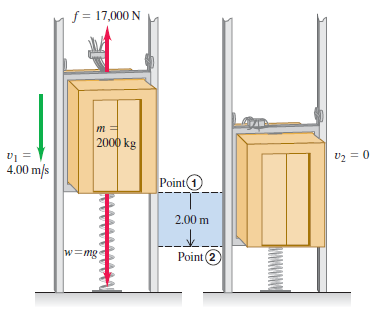(a) For the elevator of Example 7.9, what is the speed of the elevator after it has...
Question:
(a) For the elevator of Example 7.9, what is the speed of the elevator after it has moved downward 1.00 m from point 1 in Fig. 7.17?
(b) When the elevator is 1.00 m below point 1 in Fig. 7.17, what is its acceleration?
Example 7.9:
A 2000-kg (19,600-n) elevator with broken cables in a test rig is falling at 4.00 m/s when it contacts a cushioning spring at the bottom of the shaft. The spring is intended to stop the elevator, compressing 2.00 m as it does so (Fig. 7.17). During the motion a safety clamp applies a constant 17,000-N frictional force to the elevator. What is the necessary force constant k for the spring?
Figure 7.17: The fall of an elevator is stopped by a spring and by a constant friction force.

Step by Step Answer:

University Physics with Modern Physics
ISBN: 978-0321696861
13th edition
Authors: Hugh D. Young, Roger A. Freedman, A. Lewis Ford





